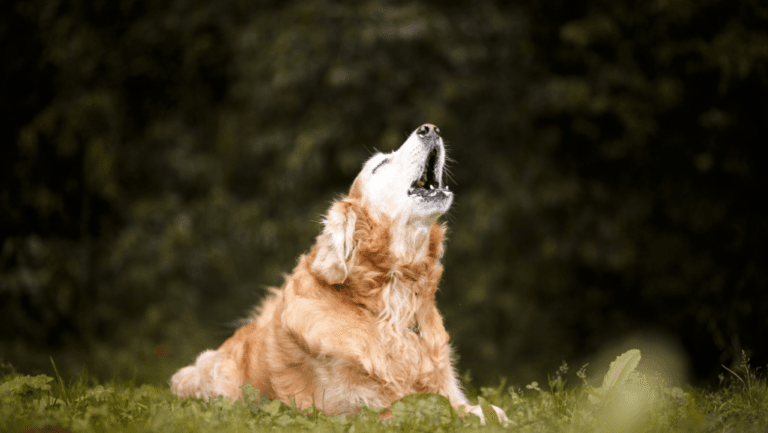Effective communication is key in dog training. While verbal commands are common, hand signals are a powerful tool. Dog training hand signals help your dog understand commands better. They also make training more fun and effective.
Dogs pay close attention to visual cues. They can learn and respond to hand signals amazingly well. Using hand signals in your training makes it more interesting for your dog. It’s also great in loud places or dog sports.
Hand signals are a big help for dogs with hearing problems. They let these dogs keep learning and growing. Learning hand signals can make your bond with your dog even stronger.
Key Takeaways
- Hand signals enhance communication and understanding between dogs and their owners.
- Visual cues are effective for training in noisy places or with hearing-impaired dogs.
- Using hand signals with verbal commands makes training more fun and diverse.
- Mastering hand signal training strengthens the bond between dogs and their owners.
- Hand signals are key for dog sports and working with dogs in different fields.
Understanding Dog Training Hand Signals
Hand signals are a key part of dog training. They help you tell your dog what to do, even when it’s noisy. Dogs are great at reading body language and visual cues, making hand signals very important.
A study at Nihon University in Japan showed dogs find sight cues better than sound. They were quicker to find a person with visual cues. Dogs also wagged their tails more when using visual cues, showing they enjoy it more.
To teach hand signals, be consistent and repeat them often. Simple signals like “stay” with a palm out or “down” with a flat hand work well. Use treats to make it more exciting and to help your dog understand.
Eye contact is key to making hand signals work. It helps your dog know you mean business. Teaching a release signal, where you hold out your hand with your palm away, is also important. It helps your dog learn to control their impulses and stay calm.
When teaching a new command, use the visual signal first. This helps your dog connect the hand gesture with the verbal command. With practice and positive feedback, your dog will learn to follow your hand signals well. This makes training more fun for both you and your dog.
Benefits of Using Hand Signals in Dog Training
Adding hand signals to your dog training routine has many benefits. It makes communication clearer and training more effective. Hand signals are silent and visual, perfect for noisy or quiet places. They work well for dogs who prefer to follow what they see over what they hear.
One big plus of hand signals is better communication with your dog. Dogs pay close attention to body language and can learn hand gestures quickly. A study shows dogs focus more on what they see, like hand signals, than on what they hear.
Using hand signals lets you talk to your dog even when it’s hard to hear. This is super helpful in noisy or quiet spots.
Enhancing Training Consistency
Consistency is key in dog training, and hand signals help a lot. Using the same signals every time makes it easier for your dog to learn. This is really important when training in different places, like home, the park, or on adventures.
Useful for Hearing-Impaired Dogs
Hand signals are a game-changer for deaf or hearing-impaired dogs. These dogs need visual cues to understand and follow commands. By teaching hand signals, you can help them communicate better and follow instructions clearly.
This not only makes training easier but also strengthens your bond with your dog. It’s a way to connect and understand each other better.
“Hand signals offer a silent communication method, suitable for noisy or quiet environments, appealing to dogs who respond quicker to visual prompts than words.”
Learning hand signals also makes your bond with your dog stronger. It takes patience, consistency, and positive feedback. These things help build trust and understanding.
As you practice these visual cues, your relationship will grow. Training will become more fun and rewarding for both of you.
Essential Hand Signals Every Dog Should Know
Hand signals are a great way to talk to your dog. They help you communicate clearly and are good for older dogs who can’t hear well. Adding these signals to your training makes your dog understand better and strengthens your connection.
- Watch me: Point to your eye to get your dog’s attention
- Sit: Palm facing upward, raising your hand upward
- Lie down: Lower your palm towards the ground
- Stay: Open hand with palm facing forward
- Come: Hand diagonally across your chest, towards your opposite shoulder
Being consistent with hand signals is very important. A study showed that 92% of professional trainers believe consistency in hand gestures is key for dogs to learn. Also, 75% of dog owners say using positive reinforcement like treats and praise works best.
Interestingly, 68% of dog commands use hand signals inspired by American Sign Language. This shows how important this language is in training dogs. Using hand signals can make your bond with your dog stronger, as 95% of owners agree.
“Hand signals give deaf dogs the opportunity to communicate and train with their owner, just like every other pup.”
To teach hand signals, first show your dog the signal, then the verbal cue, and reward them. As they learn, you can use just the hand signals. This is helpful in loud places or during competitions.
Learning these essential hand signals will improve your communication and bond. Be patient, consistent, and always end on a positive note to keep your dog eager to learn.
How to Teach Hand Signals to Your Dog
Teaching your dog hand signals is key in dog training. It makes talking to your dog better and boosts their obedience. Here’s how to teach hand signals to your dog.
Start with Basic Commands
First, teach your dog basic commands like sit, stay, come, and down. Pick a quiet spot with few distractions. Use the verbal command and hand signal together. For “sit,” say “sit” and raise your hand above their head.
Use Positive Reinforcement
Positive reinforcement is vital in dog training. Reward your dog with treats and praise when they get it right. Keep training short, 5-10 minutes, to keep them interested.
“Dogs can learn 160+ words through training and observation.”
Practice Consistently
Consistency is important in teaching hand signals. Always use the same hand signal for each command. Practice often and slowly drop the verbal cues. Dogs read body language well, so be clear with your hand movements.
A study with 25 water rescue dogs showed a big improvement. Accuracy went from 82% with just verbal cues to 99% with hand signals. This shows hand signals are very effective in dog training.
Common Mistakes in Hand Signal Training
Hand signal training is a great way to talk to your dog. But, it’s key to avoid mistakes that can slow you down. A survey by Sniffspot shows 89% of dog owners tried teaching hand signals, with 91% seeing success. Yet, even the best owners can make mistakes that confuse their dogs.
Inconsistent Signals
One big problem is using signals that don’t match. Dogs see and understand gestures like we do, so it’s vital to be consistent. When everyone uses the same signals, dogs learn faster. A study showed hand cues were 99% reliable, while voice cues were only 82% reliable when used with gestures.
Lack of Patience
Patience is essential in dog training. Getting impatient or rushing can confuse and stress your dog. Keep training short, up to 45 minutes, and use treats like boiled chicken or dried liver to reward them.
Overloading with Commands
Don’t teach too many commands at once. Start with one method, like verbal cues or hand signals, before adding more. This helps your dog learn better and avoid confusion. Focus on one command at a time, adding new ones as your dog gets better.
By avoiding these mistakes and staying consistent, patient, and focused, you can help your dog succeed in hand signal training. Whether your dog is a Border Collie, Australian Cattle Dog, or Beagle, with the right approach, you can see great results.
Integrating Hand Signals with Verbal Commands
Training your dog is easier when you use hand signals with verbal commands. Verbal cues are great, but they can be hard to hear in noisy places. Dogs, on the other hand, understand body language well and can learn hand signals quickly.
To mix hand signals and verbal commands well, start with the hand signal. Then add the verbal cue. As your dog gets it, use the hand signal alone. This way, your dog knows both mean the same thing.
Being consistent with hand signals is important. Use the same gestures you did with lures. Use different signals for commands like “sit,” “stay,” “come,” and “down.” Helping your dog when they look for guidance makes learning easier and strengthens your bond.
Balancing Both Methods
Dogs see body language like humans do. Using both verbal and visual cues helps you communicate better with them. Dogs can learn many words, so using both cues helps them understand better.
Reinforcing Learning
Repeating and rewarding your dog is key to teaching them. Aim for 5 tries per session. If your dog gets it 4 or 5 times out of 5, they’re learning. Use treats like boiled chicken or dried liver to keep them interested.
Teaching hand signals is useful in case dogs lose their hearing as they age, helping keep communication channels open.
Keep training sessions short and fun, no more than 45 minutes. Using hand signals with verbal commands improves your communication with your dog. It also makes learning easier and strengthens your bond.
Advanced Hand Signals for Experienced Dogs
Once your dog knows the basics of advanced dog training, it’s time for more complex hand signals. These are great for agility training and teaching cool tricks. Dogs see body language and gestures like humans, making hand signals a good way to communicate.
Start teaching advanced hand signals in a quiet place and then move to busier areas. Practice every day to help your dog remember. Keep training short, under 45 minutes, and use treats like boiled chicken or dried liver to reward them.
Agility Course Signals
In dog competitions, hand signals are key for guiding dogs through courses. Here are some common signals:
- Weave poles: A sweeping motion with your arm to guide your dog through the poles
- Jumps: Pointing to the jump with your arm extended
- Tunnels: A circular motion with your arm to indicate the entrance of the tunnel
Trick Commands
Teach your dog cool tricks with hand signals. Here are some popular ones:
- Spin: Make a circular motion with your finger to prompt your dog to spin in a circle
- Roll over: Move your hand in a circular motion parallel to the ground to signal your dog to roll over
- Play dead: Point your finger at your dog and then lower it to the ground
Distance Commands
Advanced hand signals let you talk to your dog from far away. This is helpful when your dog is off-leash or in a big area. Here are some distance commands:
- Come: Extend your arm out to the side and bring it towards your chest
- Stop: Hold your hand up with your palm facing your dog
- Directional commands: Point your arm in the direction you want your dog to move
Consistency is important with hand signals. Use the same gestures each time and gradually transition from using food rewards to verbal praise as your dog gets better. With patience and practice, you and your dog will master advanced hand signals. For personalized help, consider reaching out to professional dog trainers to improve your dog’s skills.
Hand Signals for Specific Situations
Teaching your dog hand signals is very helpful in many situations. It’s great for everyday moments and emergency times. By using hand gestures, you can tell your dog what to do and keep them safe.
Dogs see and understand hand gestures like humans do. This makes hand signals a great way to talk to them. They are very useful in loud places like parks or dog competitions where it’s hard to hear.
Emergency Commands
In emergencies, every second is important. Teaching your dog hand signals for “stop” or “leave it” can save them from harm. Practice these signals in quiet places first, then use them in busier areas.
It’s important to be consistent when teaching your dog hand signals. Use the same method every time to help them learn faster.
Social Situations
Dogs love to be around people and other animals. Hand signals like “quiet” or “settle” help them stay calm in busy or loud places. They are also great when your dog is too far away to hear you.
Everyday Commands
Using hand signals every day can make your bond with your dog stronger. Teach them simple commands like “heel” or “drop” with hand gestures. This makes training fun and helps them learn faster.
As your dog gets better at hand signals, teach them more complex ones. Tailor your training to fit their learning style and pace.
Hand signals are a great way to keep your dog safe and improve their behavior. They also help you communicate better with your dog. With patience and positive feedback, you and your dog will master this skill together.
Training Tips for Different Breeds
Training your dog needs special techniques based on their breed. Each breed learns differently, so it’s important to tailor your training. This way, you can get the best results from your training sessions.
Considerations for Large Breeds
Large breeds like German Shepherds and Labradors need more space. Their bigger bodies require more room to move. Make sure you have enough space and adjust your hand signals to fit their needs.
Dogs see body language like humans do. So, pay attention to your own body language when training.
Unique Challenges with Small Breeds
Small breeds, like Chihuahuas and Pomeranians, do best with close, precise hand signals. Their small size makes it hard to see signals from far away. Use clear, short movements and keep your hands near their eyes.
Training sessions should be short for small breeds. They can get distracted easily. Aim for sessions under 45 minutes for the best results.
“Hand gestures are noted as important in high-stimulation areas for effective communication with dogs.” – Off Leash K9 Training Maryland
Tailoring Signals for Working Dogs
Working dogs, like service and therapy dogs, need special hand signals. They work in places where loud noises are common. Focus on creating clear, consistent hand signals for their tasks.
Positive reinforcement is key for all dogs. Use treats like boiled chicken or dried liver to reward them. With patience and the right approach, you can teach your dog to respond to hand signals.
Hand Signals in Canine Sports
In the world of canine sports, hand signals are key. They guide dogs through complex tasks and courses. From obedience to agility, clear signals are vital for communication.
Hand signals reduce errors and boost focus in dogs. Dogs who learn hand signals pay more attention to their owners. This improves their performance.
Trainer Sandi Thompson has taught her dog, Tater Tot, 30 tricks. Each trick has a unique visual cue. This shows how important hand signals are in advanced training.
Importance of Signals in Competitive Training
Dogs need to understand both sounds and signals for good communication. Trainers teach different cues for the same command. This makes dogs versatile in various situations.
Signals for Obedience Competitions
In obedience, start with big hand signals. This lets dogs see cues from far away. Common signals include “Watch Me,” “Sit,” and “Come.”
As training gets better, use smaller signals. This fine-tunes communication with dogs.
Agility Training Signals
Agility training needs precise signals for off-leash communication. Hand signals are better than verbal cues at a distance. They help dogs respond quickly to different obstacles.
Using hand signals in training boosts performance and strengthens the bond between handler and dog. It’s a fun way to improve a dog’s mind and make training rewarding for both.
Monitoring Your Dog’s Response to Signals
Training your dog with hand signals requires watching their progress closely. This lets you see if your training is working and if you need to change anything. It’s important to observe and adjust to help your dog learn and respond well.
Watch how your dog reacts to the hand signals you teach them. If they seem confused or don’t respond, it’s time to try something different. Break tasks into smaller steps to help them understand better. Dogs learn hand signals faster than words, so be patient and keep trying.
Recognizing Understanding
It’s important to know when your dog understands a hand signal. If they always get it right, they’ve learned it. This shows in how quickly and correctly they do what you want. Three out of four pet owners find hand signals helpful in communicating with their dogs.
Adjusting Techniques
If your dog is having trouble with a signal, change how you teach it. You might make the signal simpler or use bigger gestures. Remember, using the same signals all the time helps your dog learn faster.
Experts say start with just two or three signals to avoid confusion.
Changing your teaching methods and being consistent helps your dog learn hand signals faster.
Keeping a Training Journal
Keeping a training journal is a great way to track your dog’s progress. It helps you see what’s working and what’s not. Write down the signals you’re teaching, how your dog responds, and any challenges. This way, you can learn more about how your dog learns and improve their training.
Resources for Further Learning
Starting your dog training journey with hand signals? It’s key to have good resources. There are many books, online courses, and videos that can help. They offer insights and techniques for effective training.
Recommended Books
There are several books that can guide you in dog training, including hand signals. “The Ultimate Guide to Dog Training” by Kyra Sundance and “The Power of Positive Dog Training” by Pat Miller are top picks. They cover everything from basic obedience to advanced techniques, with clear hand signal instructions.
Online Courses and Videos
Online courses and videos are also great for learning hand signal training. Udemy and Skillshare have dog training courses, including hand signal sections. YouTube is full of videos on hand signals and training, like Zak George’s Dog Training Revolution and McCann Dog Training.
Local Training Classes
Local dog training classes are a great way to learn hand signals and socialize your dog. Many trainers offer classes focused on hand signals. You can practice with an experienced instructor. Look for classes at pet stores, animal shelters, or dog training facilities.





















